Examples of practice: clips and interviews
Each session of the symposium Unfolding Human Potential (Driebergen, feb 2017) started with examples of inspiring practices. We were invited into a widely diverging range of school practices and prepared short films portraying them, to kick off each of the first three chapters of the symposium. You will find here all seven videoclips, as well as audiotracks of the interviews. Carm Barten – teacher at a primary school and master Pedagogical Theory at Amsterdam University – wrote down a short summary of the interviews.
Introduction
To take educational practices as a starting point during the symposium, every chapter started with a video that showed us an example of an inspiring practice. During the making of the videos, the producers Nickel van der Vorm and Merel Boon from NIVOZ discovered that they weren’t searching for institutes or schools. They were searching for people who wanted to open their hearts and share their story about education. This resulted in videoclips that zoom in on different perspectives of the essence of education.
Chapter 1: Nature of interaction and learning in education
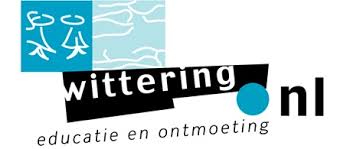 Wittering.nl, Rosmalen
Wittering.nl, Rosmalen
teacher Marianne Rongen
Wittering.nl in Rosmalen, the Netherlands, is a school for children between the ages of 4 to 12, that for over a decade has developed, maintained and carried out a novel vision on learning. At our schooling the teaching and learning process is organised radically different; not only does the school offer many different sources and pathways for learning, it also encourages pupils and their parents to nourish an active attitude towards learning. At Wittering.nl, children themselves search for answers to questions they regard important – along their own route, at their own pace. http://www.wittering.nl/
The first video takes us to a primary school that works with three units. Those units are classified on age. In every unit there is a team of ‘four different members who are equal to each other’, who guide the children in their development. Every morning, the children start in a circle, from where they decide which activity they want to do. All the activities are offered in an environment that stimulates the opportunity to work together. ‘The unit’ is an open space with a lot of little corners and workplaces that will invite children from different ages to work together with challenging materials.
Marianne Rongen is a teacher at Wittering.nl and said in the interview afterwards how strange it is to see herself back on the screen. She explained that the degree of involvement and curiosity of the children are strong signals to confirm that you as a teacher, have asked the right questions. ‘It’s important to do your observations.’ The involvement scale from Ferre Laevers (EGO education) is an instrument that she uses to check the involvement of the children. At the moment, there is a lack of involvement. She will consult her colleagues to find suitable interventions.
‘It seems so easy to do nothing, but it’s very hard.’
Whenever she works with children she tries to create an environment where the input of children is considered highly valuable. ‘It seems so easy to do nothing, but it’s very hard.’ There is a section in the video were the children are discovering different kinds of materials together with Marianne. Two children were engaged in a discussion about a rubber ball. Marianne decided not to break into the conversation, which was about the question whether rubber is synthetic or not. She made this decision because she didn’t want to interrupt the moment of exploration.
According to Marianne, another important implication of human interaction is that it can contribute to a safe pedagogical climate. ‘As a teacher it’s important to know the children, their parents and your colleagues well, because this will contribute to an optimal development.’
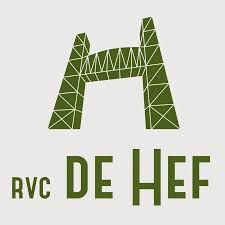 RVC De Hef, Rotterdam
RVC De Hef, Rotterdam
Naïma Zeijpveld
Rotterdams Vakcollege de Hef is a safe and valued school in Rotterdam, for children between the age of 12 to 16. The classes are alternating and mainly focused on the profession that the child wants to learn and become good at. RVC de Hef stands for connectedness, attention, quality and safety. The school aims to cross the bridge to society: the pupils are professionals of the future; they are aware of their citizenship and able to provide a meaningful contribution to society. http://www.rvcdehef.nl/
‘Good morning darlings!’ Naïma Zeijpveld is standing in the doorway and welcomes every student with a firm handshake and a lot of energy. Before she starts her English lesson, she asks a boy how he experienced the visit at the doctor the day before. ‘You’re looking well today!’, she said.
Naïma is an English teacher at RVC De Hef – a secondary school in an urban neighborhood with broad cultural diversity. Most children don’t get the support, which is necessary for a fair chance in the educational system, from their parents. Many of them have lost confidence in current teachers, which leeds to a lack of motivation. This chapter and this video zoom in on the interaction Naïma has with her students. To check the quality of those interactions it’s important for her to ‘feel’ the students. She can sense it if she reached the students in the interaction. ‘When I look at the students, it opens my heart.’
‘As a teacher you have to be authentic and overload them with love. You have to show them your feelings and your emotions.’
Naïma: ‘As a teacher you have to be authentic and overload them with love. You have to show them your feelings and your emotions.’ She explained that many students are not used to this. In the beginning, students think that the teacher is joking. ‘The students are world champions in putting on a mask. The overload of love is sometimes a shock for them, but they have to sense that you mean it. To get confident with this open way of interaction, based on trust and love, takes time from both ends. But at the end it’s all worth it. The moment they give you a sneak preview in their soul, that’s when the tears come. This is the moment that you know that they are authentic too.’
According to Naïma, human interaction is the most important part of education. ‘Otherwise you can give them a video or they could stay at home. Human interaction gives them the freedom to grow and to express themselves.’
—> Audiotrack, listen from 53’00

Chapter 2: Nature of teacher education
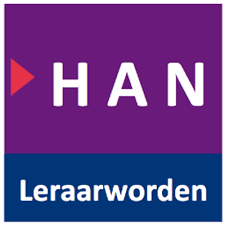 HAN, Nijmegen
HAN, Nijmegen
Maaike Nap
At Han PABO, a school for educating teachers for primary schools, in Arnhem/Nijmegen, The Netherlands we feel the importance to teach what we preach. In order to adapt to our students our education is characterized by nearness, cooperation, ownership, dialogue and reflection. Together with students we search for ways so they can fully use their potential. https://www.han.nl/opleidingen/bachelor/lerarenopleiding-basisonderwijs/vt/
See, let’s see and be seen, is the theme of the current lesson from HAN in Nijmegen. In the video the students of the School of Education are sitting opposite one another while looking each other in the eye for two minutes. After this exercise the students have to share their experiences. ‘I think you’re a good listener, because your head is tilted a bit’, someone said afterwards. The idea behind this exercise is that if the students feel seen, and become aware of the reason why, they can also do this with children as primary school teachers. Through different kinds of drama exercises, they physically experience what’s happening. After these experiences they can come to new insights.
Maaike Nap is a teacher at the HAN. She tries to reach her students, by figuring out what keeps them busy. For her it’s important to walk alongside the students through their experiences. Her goal is to teach the students how to look well, in the hope that they will see more. ‘I want to show them that everyone is different, and how this is worthwhile. In a dialogue, I try to give them the grammar and vocabulary which is necessary to “read” a child.’
I want to show them that everyone is different, and how this is worthwhile.'
In the interview, Maaike also explained that students need to face the difficulty of reality, to make a good transition from student to primary school teacher.
‘When students know what they truly believe in and what they are striving for, it’s easier for them to manage difficult situations.’
According to Maaike, teamwork is important to make the lessons a success. ‘It’s not possible to do this without my colleague who is a drama teacher. I strongly believe in course integration where two separate courses like drama and pedagogics are integrated. In addition, my two kids and my husband are a great source of inspiration to me. They keep me awake and they let me feel what the theories in my head, really mean.’
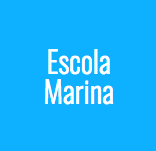 Escola Marina, Barcelona
Escola Marina, Barcelona
Marta Zorrila
Marina school is a newly established center (opened in 2005) innovative and in constant growth. We want to achieve the whole development of our students, working for the expansion of their individual abilities in a welcoming and respectful environment. For this reason, we promote participation, transparency, integration, cooperation, dialogue, creativity, solidarity and responsibility. At Marina school – located in Montgat, Barcelona – approximately 500 students (in the age of 4-12 years) get daily classes. agora.xtec.cat/ceipescolamarina
‘The most beautiful moment for me today, was the moment that I came into the classroom, because I like to see the children and their happy faces.’ Marta Zorrila is a teacher at Escola Marina, a primary school in Spain. She feels thankful for being a teacher.
Marta doesn’t use textbooks for her English lessons. Sometimes this makes her insecure, but it does give her the opportunity to get different kinds of materials to better her lessons. The search for the right method was a lengthy one and at one point, she noticed that she needed a more systematical approach. Giving herself and the children a larger amount of time, to figure out if the new method works or not, is part of this approach.
Alongside the English lessons, Marta believes it is important to prepare the students for real life, to face challenges by themselves. To follow these kinds of ideals, she thinks teachers need to question themselves about what’s necessary to be a good teacher. According to her this means that the educational approach has to be focused on a more holistic way of development instead of focusing on separate disciplines. ‘We have to teach them how to grow as a person’, she says.
We have to teach them how to grow as a person’
Marta’s primary task is teaching ‘the discipline’ English, nevertheless, she tries to do so in a more holistic and more moralistic way. To do so, she thinks it’s necessary first to get a close relationship with the students. Second, she thinks you have to share your own passion and love for teaching the language. In this way, she also teaches them to love the language and culture. Marta noticed that while she is teaching the English language, she is also acquiring it alongside her students.
Marta believes that every teacher creates their own pedagogical identity. ‘To do so, you have to teach, observe and experience what works and what doesn’t. You also take valuable aspects from your colleagues and other people in your environment.’ She admitted that this is a subjective process. The objective part of the process is the theoretical framework you have to understand. ‘Otherwise it’s not pedagogics.’
—> Audiotrack, listen from 21’05

Chapter 3: Nature of leadership and school development.
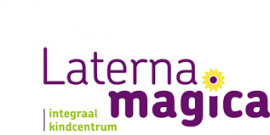 IKC Laterna Magica, Amsterdam
IKC Laterna Magica, Amsterdam
Annette van Valkengoed
Laterna Magica is a school where ‘Natural Learning’ (social-constructivism, inclusion) take place for now 800 children of 0-12 years to 0-18 years developing, Amsterdam, The Netherlands. Each child works with its own portfolio and a personal development plan in a continuous line of development. http://www.obslaternamagica.nl/corp/?site=37
Laterna Magica is a primary school for natural learning. There are no year groups, classrooms or textbooks. Every child has his or her own development plan. This plan will be continuously used between the ages of 0 to 12. The curiosity of children is the source for natural learning, and thanks to the encouragement of teams in schools, this curiosity can flourish.
In one section of the video we see older children preparing lunch for the younger ones. In another section, older children are giving a “science” workshop to the juniors. One of the juniors: ‘First he did it at home and then here.’
Every unit has “jobs” for which the children can apply, such as: turtle expert, toilet expert or mail carrier. For the children, this is a serious matter for which it is necessary to have a job interview. An example of this phenomenon is a group of children who applied for a job at the farm, which is located at the school. ‘We had to write a letter in which we had to explain why we should become an animal expert, what we were already able to and what not, why it should be us, and so on. After that, all five of us had a second job interview. Following this interview, we had to do a coöperation test, to show how well we work together. At the end the three of us got the job.’ The children explain why these processes to get a job are so important: ‘You mostly have to take it seriously. You can’t just give the animals loads of food. You should know how much to feed them, be responsible and be there every day.’
According to the teachers of Laterna Magica, the notion of responsibility is an important part of their education. ‘You have responsibility. No one else will take this for you. You are responsible for your own actions.’ To give the children responsibility, they are not only performers but they also have to design and analyse their work. This creates leadership.
You have responsibility. No one else will take this for you. You are responsible for your own actions.’
Annette van Valkengoed is the school leader of Laterna Magica. She uses her values as a compass for what she is doing. She tries to create a team with a lot of diversity in talents. Annette wants to be the kind of leader who, together with her team, creates the right circumstances to “fly a kite” with the children. This asks for a leader who can give space for autonomy but takes grip when it’s needed. ‘What we do with our children: give them responsibility, is also what I try to do with my team of teachers and unit leaders.’
Annette experiences a struggle between the development of a new school system and the way they have to defend it. In this struggle, she sometimes feels vulnerable. She explains this with an example of the visit of the school inspector. Because of her responsibility as principle, she felt vulnerable at the moment she had to explain how the school complies with the strict curriculum. In the end, she created a situation where the inspector had to see through her eyes, which led to an open dialog. Both the inspector and Annette learned a lot from this.
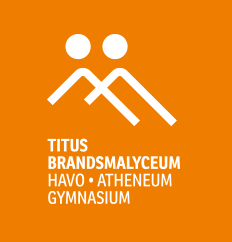 Titus Brandsmalyceum, Oss
Titus Brandsmalyceum, Oss
Tom Brocks
The Titus Brandsmalyceum in Oss, The Netherlands, was named and co-founded by Professor Dr. Titus Brandsma (1881-1942) He is often typed as sincere and driven. He standed for his opinion, even though it was different than others. This willfulness is characterising for the school. At the Titus Brandsmalyceum, where children between the age of 12 to 18 are involved, tradition is important, with a direction towards the future. They want to raise their children towards critical, self-aware young people who stand for something: passion instead of indifference, discover and explore instead of waiting, interest instead of superficiality, and connected instead of alone. http://www.hethooghuis.nl/tbl
Tom Brocks is principal at secondary school Titus Brandsmalyceum. He considers it his duty to show that everyone can be who they are, and that everyone can grow, just like he did. For Tom the main issue of leadership is synergy. He starts with acknowledging everyone who works with him. According to him, a school leader need to lead the way in their vulnerability by opening herself first. Sharing your own biography or narratives are ways to do so. This increases the probability that teachers and students are prepared to share their values. Using these values as a starting point, a school leader can create a school.
It’s up to me, to make students realise that they matter.’
In the video Tom is sitting with the student council to talk about aspects of the school that need to be improved. ‘We score above average on everything, but I’m still surprised the toilets are so bad here,’ a student brings in. Another student shared that she is very honoured to have gotten the opportunity to study at Titus Brandsmalyceum, even though she comes from a lower level of secondary education. This story moved Tom, because the situation of the girl shows great similarity to his own biography. Years ago, he started working as principal without a university degree, which turned out to be an issue. Quickly he noticed that his colleagues gave him the opportunity to develop, which helped him grow.
He and his management team decided to involve students with job interviews for new teachers. The opinion and daily experiences of the students are very important for Tom as principal. ‘It’s up to me, to make students realise that they matter.’
L’ecole Singelijn, Brussel
Dominique Paquot
Singelijn is an “active agency and integration” school for children between 4-12 years, in Brussels, Belgium. The school places the child at the centre of its own cognitive and social development. Children with (learning) disabilities are welcome and an equal part of school life in Singelijn. http://www.ecolesingelijn.be/
Dominique Paquot is principal of primary school L’ecole Singelijn. He thinks it’s a complicated profession because one always has to be empathic and available. ‘But the most beautiful thing is the look and the smile on a child’s face. I would think about the child above anything else. My sole mission and desire in life as a teacher, was to be the kind of teacher that I would have wanted to have when I was a child.’
L’ecole Singelijn is all about inclusion. This is shown by the way they actively include children with (learning) difficulties. Once, a child with difficulties came to school. At that moment Dominique explained to the children how lucky that new child was to get the chance to come to their school. After some years, a child from that class came to Dominique and said: ‘I think you were wrong. Because you told us that she was lucky to be in our class, but we are the lucky ones to have her in our class.’
At L’ecole Singelijn they strive for the children to take an active role in their own lives. ‘It’s not simply responding to the teacher,’ Dominique explains. One of the teachers says in the video that, as principal, Dominique inspires her to teach in a way that the children can develop self-esteem and autonomy.
For Dominique the most important signal is the pleasure that both teachers and students express. He feels lucky to be close to the working field, which creates the opportunity to have a close relationship with his teachers and students. The choice of not working with manuals gives him the freedom to stay close to the experiences of the children. According to Dominique a school leader normally asks; ‘what does the teacher bring.’ But in L’ecole Singelijn it’s about what the children bring. If the children are the director of their own learning, then there will be pleasure.
If the children are the director of their own learning, then there will be pleasure.'
Having to explain to parents why the results where atypical was one of the challenges for their school. L’ecole Singelijn is using more than just the objective measurable results when they’re talking about the development of children. For them, pleasure is also a result. The faith in what their school has to offer, gave Dominique strength in those vulnerable situations. Also at the moments that parents where knocking at his door six years ago, when he decided to take away the grades and stop with giving homework. He still has a strong belief that this way of education leads to adults who are creative, have imagination and are acting in the world. For example, a child with Down’s syndrome who was reluctant at first and who’s now in a class that has not slowed down in their development. But more important, where she has a good relationship with classmates.
—> Audiotrack, listen from 22’00


